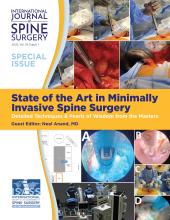ABSTRACT
Atlantoaxial rotatory fixation (AARF) is a rare condition in adults and is almost always due to an accompanying trauma. The first example of traumatic AARF in adults was reported by Corner in 1907 and since then only 55 adult cases with this rare traumatic scenario have been published so far. Approximately 80% of adults with traumatic AARF are diagnosed soon after the traumatic events. However, in the remaining casualties, the condition might be missed with some delay from the diagnosis to treatment.
If this pathology is diagnosed early enough, the conservative attempts for a closed reduction are usually effective. After closed reduction, external immobilization is required to prevent recurrence of the dislocation. However, with delayed diagnosis, the condition may remain refractory to traction on manipulation and require an open reduction instead. In the literature, such irreducible chronic AARFs are rarely reported, being confined to only 14 adult examples, in whom surgical intervention for correction of the deformity will be required. In such cases, release of the atlantoaxial facet joints is the first surgical step. In the subsequent step, reduction of the dislocated facet joints can be done via one of the already described maneuvers. As the final step, C1-C2 fixation will be necessary for prevention of re-dislocation.
Herein, 2 adult patients with chronic rotatory atlantoaxial dislocation of traumatic origin are presented. In both cases, cranial traction and manipulations were ineffective and therefore an open reduction procedure was proposed and accomplished via the posterior midline corridor. The transverse rod technique was implemented subsequent to the atlantoaxial facet release. After correction of the deformity, a C1-C2 fixation was accomplished followed by arthrodesis. In addition to the outlined procedure, an historical review of the literature on this subject from the beginning of 20th century is demonstrated.
- atlantoaxial fact joint
- C1 lateral mass screw
- C2 pars screw
- atlantoaxial rotatory fixation
- spinal trauma
- torticollis
- traction
- ©International Society for the Advancement of Spine Surgery







